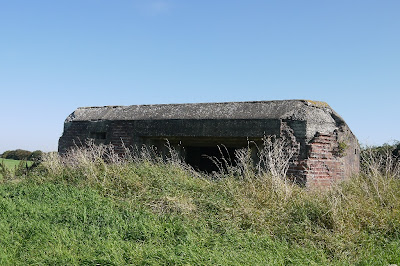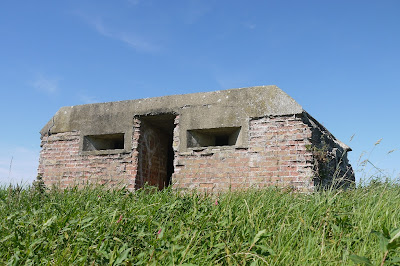This is perhaps one of the best pillbox walks I've ever done. Five pillboxes, all in good condition, all accessible and in some pleasant scenery. I started my walk from Three Holes (good general purpose store here to stock up with nibbles, drinks etc). I've already posted before on the Type 28a at Three Holes, so only one photo for this pillbox:
I continued past this pillbox, following a drain along which are situated four Type 24 Shell Proofs and two Type 28a's although unfortunately I only had time to visit three of the Type 24's and one of the Type 28a's.
The image below shows the landscape and the effective anti-tank obstacle the drain would have made. In fact any German Force landing on the north Norfolk Coast and making its way south would also have had to cross the Middle Level Main Drain, which runs in a north-easterly direction from Three Holes.
Next set of images show the three Type 24 shell proof pillboxes. All are in reasonable condition (some have lost quite a bit of their brick shuttering and one has had the brick anti-ricochet wall removed) and clean inside.
Above: Walking from Three Holes, the first of the shell proof Type 24's. Note the brick anti-ricochet wall has been removed.
Above: Second of the shell proof Type 24's
Above: Third of the shell proof Type 24's
Above: Type 28a Pillbox, suffering a bit from subsidence! Note those metal rods again on the inside of the main embrasure - still no idea what they were for!
After the Type 28a had to turn back to the car to continue my journey up north (there is a further Type 24 and 28a along the drain). Heading north from Three Holes I came across another Home Guard store in the next village, Outwell.

















Comments
Post a Comment